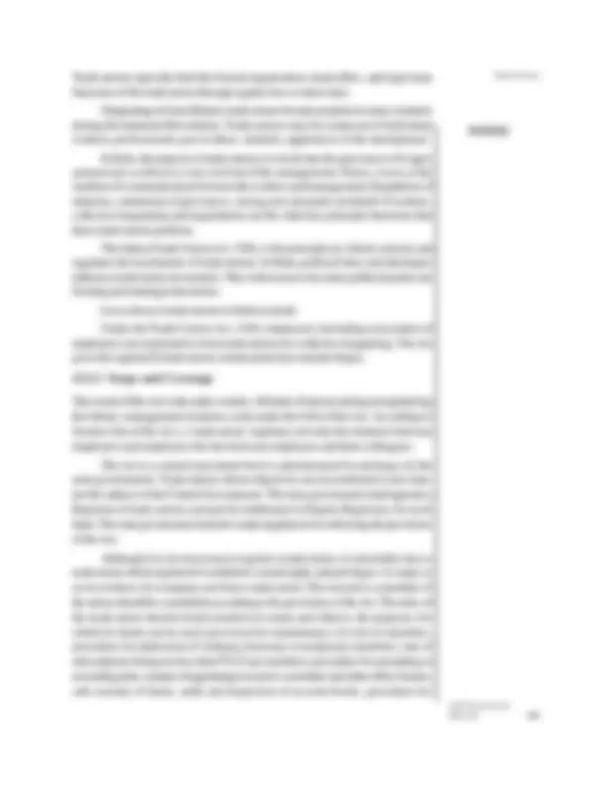



Study with the several resources on Docsity

Earn points by helping other students or get them with a premium plan


Prepare for your exams
Study with the several resources on Docsity

Earn points to download
Earn points by helping other students or get them with a premium plan
Community
Ask the community for help and clear up your study doubts
Discover the best universities in your country according to Docsity users
Free resources
Download our free guides on studying techniques, anxiety management strategies, and thesis advice from Docsity tutors
Human Resource Management (HRM) is a strategic and comprehensive approach to managing people within an organisation. It involves recruiting, hiring, training, evaluating, and rewarding employees to maximise their performance and align with the organisation’s goals. HRM also ensures compliance with labour laws, fosters a positive workplace culture, and supports employee development and well-being. By managing workforce planning, performance, compensation, and employee relations, HRM plays a vital role in organisational success. In today’s dynamic business environment, HRM is increasingly data-driven and aligned with long-term strategic planning, making it an essential function in both large corporations and small enterprises.
Typology: Lecture notes
1 / 2

This page cannot be seen from the preview
Don't miss anything!


Trade Unions
Self-Instructional 154 Material
Structure 13.0 Introduction 13.1 Objectives 13.2 Trade Unions: Multiplicity of Trade Unions 13.2.1 Scope and Coverage 13.2.2 Rights of Registered Trade Unions 13.2.3 Workers Participation in Management 13.3 Separation: Needs and Methods 13.3.1 Process of Employee Separation 13.4 Answers to Check Your Progress Questions 13.5 Summary 13.6 Key Words 13.7 Self Assessment Questions and Exercises 13.8 Further Readings
The Trade Unions Act, 1926 allows employees to form registered trade unions for collective bargaining. The Act gives the registered trade unions certain protection and privileges. The government also formulated a comprehensive scheme on 30 December 1983 for workers’ participation in management. The scheme, applicable to all public sector undertaking, allows both the workers and the management to have equal participation in the shop/plant forums. In this unit, we will discuss the concept of trade union, along with the significance of workers’ participation in management. It will also focus on the need and methods of employee separation.
After going through this unit, you will be able to: Understand the concept of trade union Discuss the significance of workers’ participation in management Describe the need and methods of employee separation
Trade unions are organizations formed by workers from related fields that work for the common interest of its members. They help workers in issues like fairness of pay, good working environment, hours of work and benefits. They represent a cluster of workers and provide a link between the management and workers.
Self-Instructional Material 155
Trade unions typically fund the formal organization, head office, and legal team^ Trade Unions functions of the trade union through regular fees or union dues.
Originating in Great Britain, trade unions became popular in many countries during the Industrial Revolution. Trade unions may be composed of individual workers, professionals, past workers, students, apprentices or the unemployed.
In India, the purpose of trade unions is to look into the grievances of wagers and present a collective voice in front of the management. Hence, it acts as the medium of communication between the workers and management. Regulation of relations, settlement of grievances, raising new demands on behalf of workers, collective bargaining and negotiations are the other key principle functions that these trade unions perform.
The Indian Trade Union Act, 1926, is the principle act which controls and regulates the mechanism of trade unions. In India, political lines and ideologies influence trade union movements. This is the reason why today political parties are forming and running trade unions.
Let us discuss trade unions in India in detail. Under the Trade Unions Act, 1926, employees (including association of employers) are registered to form trade unions for collective bargaining. The Act gives the registered trade unions certain protection and privileges.
13.2.1 Scope and Coverage
The extent of this Act is the entire country. All kinds of unions aiming at regularizing the labour–management relations come under the fold of this Act. According to Section 2(h) of the Act, a ‘trade union’ regulates not only the relations between employees and employers but also between employees and their colleagues.
The Act is a central enactment but it is administered by and large, by the state governments. Trade unions whose objectives are not restricted to one state, are the subject of the Central Government. The state government shall appoint a Registrar of trade unions assisted by Additional or Deputy Registrars, for each State. The state government shall also make regulations for enforcing the provisions of the Act.
Although it is not necessary to register a trade union, it is desirable since a trade union which registered is entitled to certain rights and privileges. As many as seven workers of a company can form a trade union. The executive committee of the union should be constituted according to the provisions of the Act. The rules of the trade union should clearly mention its name and objects, the purposes for which its funds can be used, provision for maintenance of a list of members, procedure for admission of ordinary, honorary or temporary members, rate of subscription (being not less than ` 0.25 per member), procedure for amending or rescinding rules, manner of appointing executive committee and other office-bearers, safe custody of funds, audit and inspection of account books, procedure for